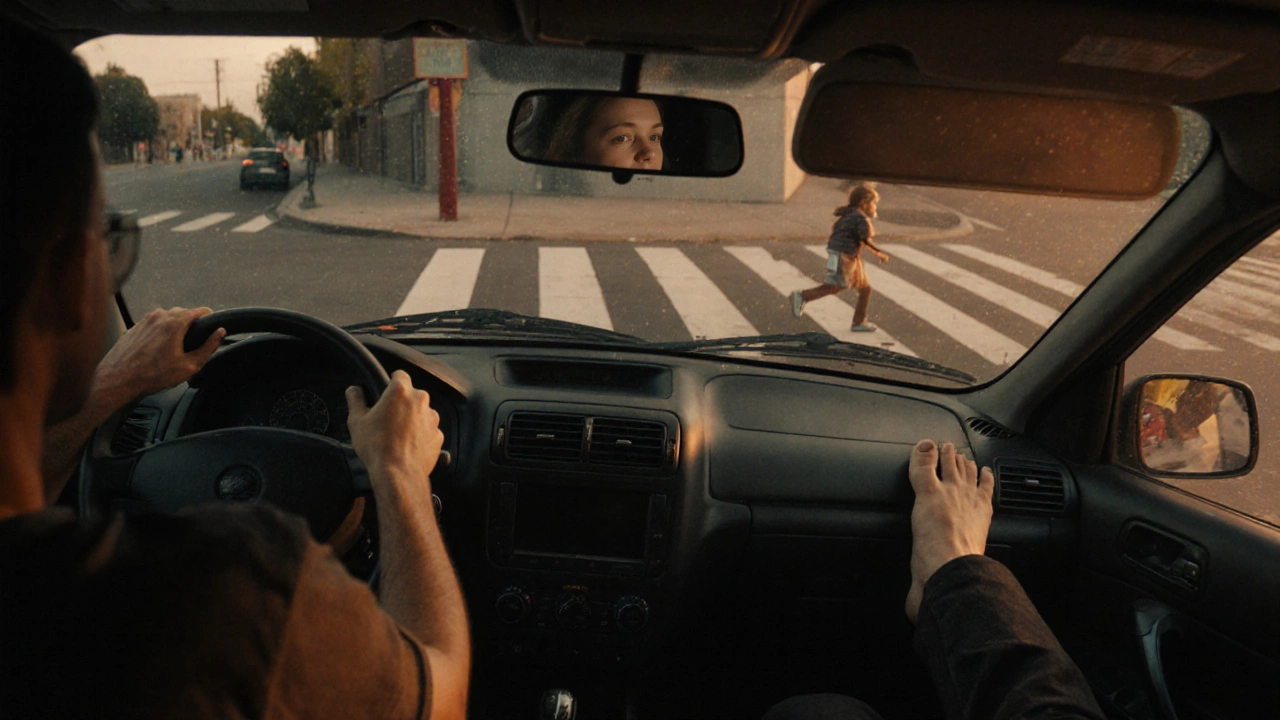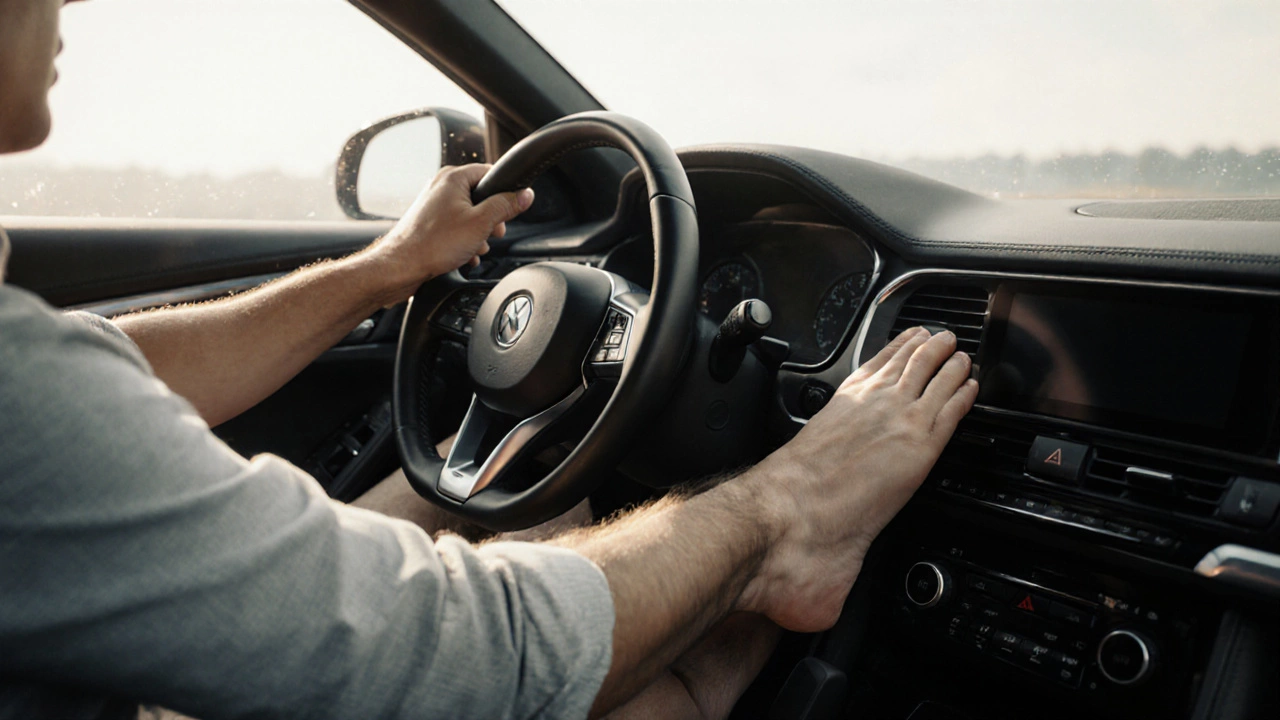Automatic Driving Foot Placement Quiz
How much do you know about safe driving techniques in automatic cars?
Take this quick quiz to test your knowledge of proper foot placement when driving an automatic car. Based on the article, find the correct answers to improve your safe driving habits.
Question 1: Which foot should you primarily use when driving an automatic car?
Question 2: What is the main risk of using your left foot to brake in an automatic car?
Question 3: What is "brake drag"?
Question 4: How long does it typically take to adapt to right-foot-only braking?
Question 5: Is left-foot braking recommended for regular driving?
When you first sit behind the wheel of an automatic car, it feels like magic-no clutch, no gear shifts, just go. But then someone says, "Do you use both feet?" and suddenly, you’re second-guessing everything. Is it safe? Is it legal? Is it even normal? The answer isn’t as simple as yes or no, and the truth might surprise you.
What Most People Do (and Why It’s a Problem)
Most drivers in automatic cars naturally use their right foot for both the accelerator and the brake. That’s what you’re taught in driving lessons. It’s safe, it’s standard, and it’s the way every car manufacturer designs the pedal layout. But here’s the twist: some people-especially those who learned to drive in manual cars-switch to using their left foot for the brake. They think it’s faster. They think it gives them more control. And honestly? Some even swear by it.But here’s the reality: using your left foot to brake in an automatic car increases the risk of accidental acceleration. It’s not theoretical. The National Highway Traffic Safety Administration (NHTSA) in the U.S. documented over 1,600 incidents between 2000 and 2010 where drivers mistakenly pressed the accelerator instead of the brake. Many of those cases involved drivers who used their left foot for braking. Why? Because when you’re startled-say, a child runs into the road or the car in front slams on its brakes-your brain defaults to muscle memory. If both feet are active, your left foot doesn’t know when to stop pressing.
The Right Foot Rule: Why It’s Built Into Every Car
Car designers didn’t put the brake and accelerator side by side by accident. The layout is intentional. Your right foot is stronger, more precise, and has better fine motor control. It’s also the foot you’ve used for both pedals since you first learned to drive. That consistency matters.Think of it like typing. If you suddenly switched to using your left hand for the spacebar and your right for the letter keys, you’d make more mistakes. Same thing here. Your brain learns one pattern: right foot down = go, right foot up = brake. When you break that pattern, you create confusion.
Even experienced drivers who’ve driven automatics for decades stick to the right foot rule. Why? Because it works. It’s reliable. And in an emergency, reliability beats intuition.
What About Racing Drivers and Left-Foot Braking?
You’ve probably seen professional racers braking with their left foot while keeping their right foot on the throttle. That’s called left-foot braking. It’s a high-performance technique used in rally, Formula 1, and drifting. But here’s the catch: those drivers train for years. Their cars are modified. Their pedals are spaced differently. Their reflexes are honed to milliseconds.That’s not something you can copy on a quiet suburban street. In fact, left-foot braking in a regular automatic car is like trying to juggle chainsaws because you saw someone do it on YouTube. It looks impressive, but the odds of disaster are high.

Common Myths About Both Feet Driving
There are a few myths floating around that make people think using both feet is a good idea. Let’s clear them up.- Myth: "Left-foot braking gives me quicker reaction times."
Truth: Studies show no meaningful difference in reaction time between right-foot-only and left-foot braking in normal driving conditions. The slight gain is canceled out by the increased risk of pedal misapplication. - Myth: "I’ve been doing it for years and nothing’s happened."
Truth: Just because you haven’t crashed yet doesn’t mean it’s safe. It’s like driving without a seatbelt-you’ve been lucky, not smart. - Myth: "It helps with hill starts."
Truth: Automatic cars don’t roll back like manuals. Most have hill-start assist. You don’t need to hold the brake with your left foot. Just ease off the brake with your right foot and press the accelerator.
What Should You Do Instead?
Stick to the right foot. Always. Here’s how to make it second nature:- Place your right heel lightly on the floor, just behind the brake pedal. This gives you a pivot point.
- Use the ball of your foot to press the accelerator. Keep your heel grounded.
- When you need to brake, rotate your foot upward from the heel. Don’t lift your foot off the floor.
- Never rest your left foot on the brake pedal. Even lightly. That’s called "floating" and it can cause brake drag, overheating, and premature wear.
Practice this in a quiet parking lot. Close your eyes (metaphorically-don’t actually drive with your eyes closed) and imagine the pedal movement. Feel the transition from accelerator to brake. Make it smooth. Make it automatic.

What If You’ve Been Using Both Feet?
If you’ve been using your left foot to brake for years, don’t panic. You can retrain yourself. It takes about 2-4 weeks of conscious effort to break the habit. Start by:- Keeping your left foot on the floor, resting on the dead pedal (the flat area to the left of the brake).
- Setting a reminder on your phone: "Right foot only."
- Asking a passenger to gently correct you if they notice your left foot moving toward the brake.
It feels awkward at first. You’ll think you’re braking too slowly. But within a week, your body will adapt. And you’ll start noticing how much calmer your driving feels.
What Happens If You Don’t Change?
The risks aren’t just about crashes. Constantly resting your left foot on the brake-even lightly-can cause:- Brake overheating from constant light pressure
- Reduced fuel efficiency (brakes dragging = more resistance)
- Worn brake pads and rotors
- Increased risk of sudden acceleration events
Insurance companies in New Zealand and Australia have noted that drivers who use both feet are statistically more likely to be involved in low-speed parking lot collisions. These aren’t big crashes-they’re fender-benders, often blamed on "driver error." But the root cause? Foot placement.
Final Thought: It’s Not About Speed. It’s About Safety.
Driving an automatic car isn’t about being fast. It’s about being predictable. About being calm. About letting the car do what it’s designed to do. The right foot rule isn’t outdated-it’s engineered. It’s proven. It’s the reason automatic cars are safer than manuals in city traffic.So next time you get behind the wheel, ask yourself: Is my left foot resting safely on the floor? Or is it hovering, ready to mess everything up? One small change-your foot position-can make your driving safer, smoother, and stress-free.
Is it illegal to use both feet when driving an automatic car?
No, it’s not illegal in New Zealand, the U.S., or most countries. But it’s strongly discouraged by driving instructors, safety organizations, and vehicle manufacturers. While you won’t get fined for it, you could be held more liable in an accident if it’s determined that improper foot placement caused the crash.
Can left-foot braking damage my car?
Yes. Resting your left foot on the brake pedal-even lightly-causes what’s called "brake drag." This makes the brakes work harder than they should, leading to overheating, faster wear on pads and rotors, and reduced fuel efficiency. Over time, this can cost hundreds in repairs.
Why do some people say left-foot braking is better?
Some drivers, especially those who used to drive manuals, feel more in control with their left foot on the brake. Others have seen racing drivers do it and think it’s a trick. But in real-world driving, the added risk of accidentally pressing both pedals at once far outweighs any perceived benefit. Racing cars have different pedal spacing, no cruise control, and drivers with years of training. That doesn’t translate to daily driving.
Should I use the left foot for the clutch in an automatic?
Automatic cars don’t have a clutch pedal. There’s nothing to press with your left foot. If you’re used to manual cars, your left foot may feel like it’s "missing something." That’s normal. Place it on the dead pedal-the flat area to the left of the brake-and keep it there. It’s there for a reason.
How long does it take to switch from left-foot to right-foot braking?
Most drivers adapt within 2 to 4 weeks with consistent practice. The first few days feel strange, like you’re braking too slowly. But your body learns muscle memory fast. After a week, you’ll notice you’re calmer at stoplights and more confident in heavy traffic. It’s not about speed-it’s about safety.

